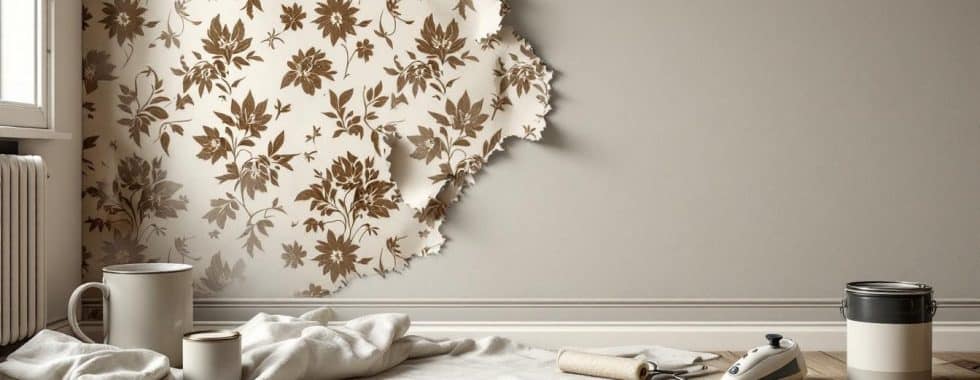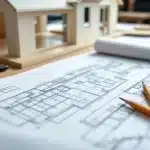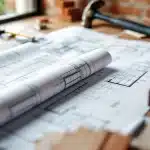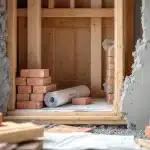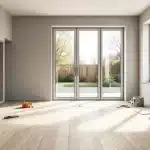How to Renovate a 70s Home with Modern Style
At Cameron Construction, we’ve seen a surge in homeowners looking to breathe new life into their 70s houses. Renovating these retro gems can be an exciting journey, blending vintage charm with modern functionality.
Our guide to 70s house renovation will walk you through the process, from initial assessment to stunning transformation. We’ll share practical tips and expert insights to help you create a contemporary living space while honouring your home’s unique character.
How to Plan Your 70s Home Renovation
Identify Key Architectural Features
At Cameron Construction, we’ve noticed a trend of homeowners wanting to revitalise their 70s houses. The first step in this process is to pinpoint the defining architectural elements of your home’s era. Look for features such as sunken living rooms, wood panelling, or exposed brick walls. These elements can be preserved or updated to mix vintage appeal with modern design.
Evaluate Structural Integrity
Before you start any cosmetic updates, you must check your home’s structural condition. We recommend you hire a professional inspector to examine potential issues like foundation problems, outdated electrical systems, or plumbing concerns. Many 70s homes need upgrades to meet current building codes and energy efficiency standards (which can significantly impact your renovation budget).
Create a Realistic Budget
A comprehensive budget is vital for a successful renovation. Try to set aside 5%-10% of your total budget for unexpected costs. Break down costs for each area of your home, including materials, labour, and unexpected expenses. Don’t forget to include costs for permits and potential temporary housing during extensive renovations (these often-overlooked expenses can add up quickly).
Establish a Project Timeline
A well-planned timeline keeps your project on track. Most full home renovations take 3-6 months, depending on the scope of work. Start by prioritising essential upgrades, then move on to aesthetic changes. Add buffer time for unexpected delays or changes in your renovation plans.
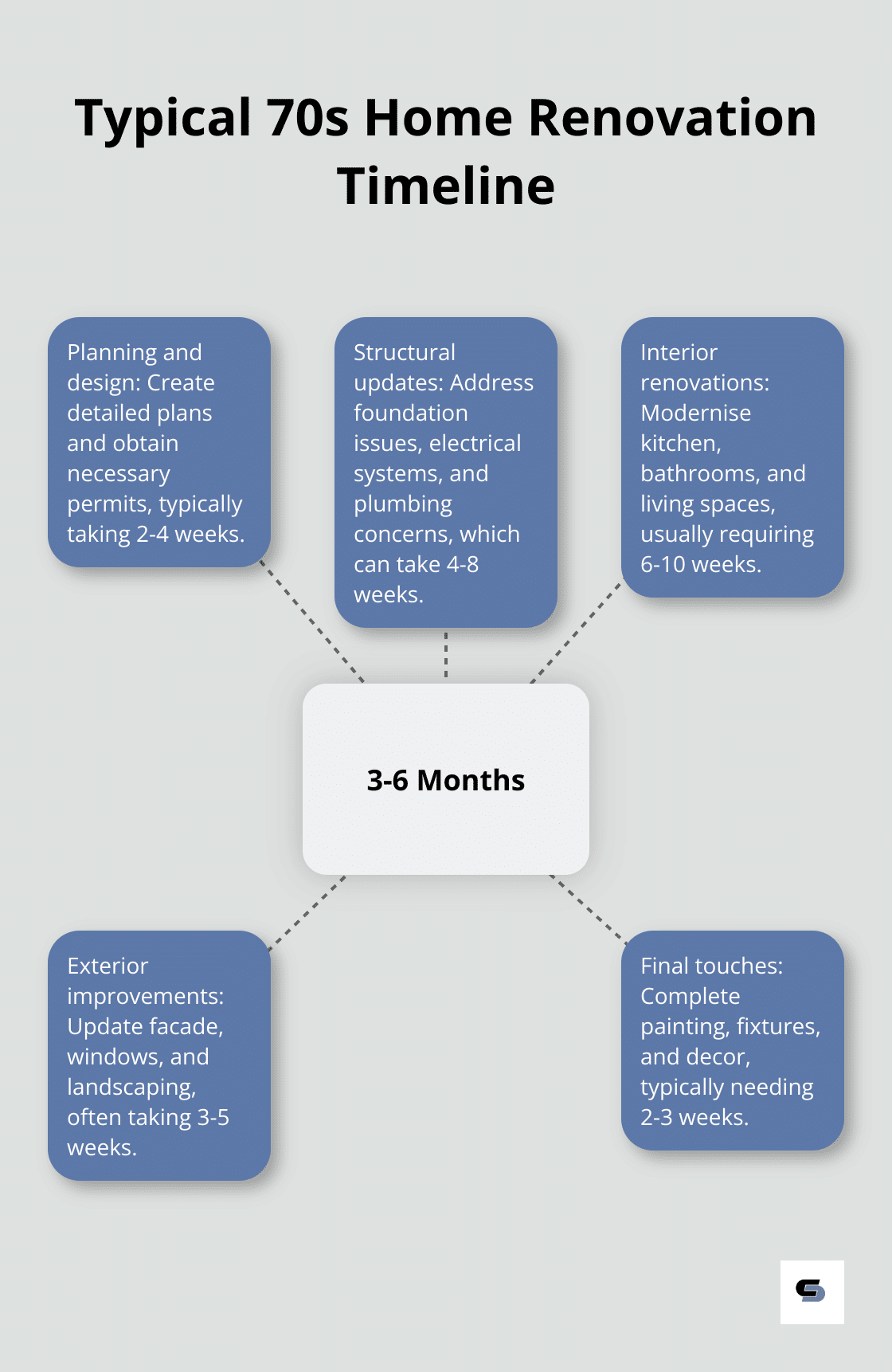
Choose the Right Professionals
Selecting experienced professionals will make your renovation process smoother. Find contractors and designers who have specific experience with 70s home renovations. Check references, read reviews, and ask to see portfolios of similar projects.
The next step in your 70s home renovation journey is to modernise the interior while maintaining its unique charm. Let’s explore specific strategies to achieve this balance in the following section.
How to Modernise Your 70s Home Interior
Open Up Your Floor Plan
One of the most impactful changes you can make is to create an open-concept living area. Most 1970s houses are likely to be weathertight and structurally sound, with large eaves that give good weather protection, airtight windows and ventilated spaces. This often involves the removal of non-load-bearing walls between the kitchen, dining room, and living room. Before you start demolition, consult with a structural engineer to ensure you don’t compromise your home’s integrity.
A recent project involved the removal of a wall between the kitchen and living room. This change instantly made the space feel larger and more connected. It allowed natural light to flow throughout the area, creating a brighter, more inviting atmosphere.
Update Finishes and Materials
Refreshing dated finishes is essential for a modern look. Replace old carpets with hardwood flooring or modern tiles. If your budget is tight, consider luxury vinyl planks (they’re durable, water-resistant, and come in a variety of wood-look finishes).
For walls, replace wood panelling with smooth drywall. Paint in neutral tones to create a clean, contemporary backdrop. Cool greys and warm whites are particularly effective in modernising 70s interiors while maintaining a timeless appeal.
In kitchens and bathrooms, update benchtops with materials like quartz or granite. These not only look sleek but are also highly durable and easy to maintain. Replace old cabinet fronts or repaint existing ones for a cost-effective update.
Incorporate Modern Lighting and Technology
Lighting can dramatically transform your space. Replace outdated fixtures with modern designs – think sleek pendant lights over kitchen islands or statement chandeliers in living areas. Install dimmer switches to create flexible lighting options for different moods and activities.
Don’t overlook smart home technology. Systems that allow homeowners to control lighting, heating, and security from their smartphones not only add convenience but also improve energy efficiency.
A recent renovation included the installation of a smart thermostat and LED lighting throughout the home. The homeowners reported a reduction in their energy bills within the first three months.
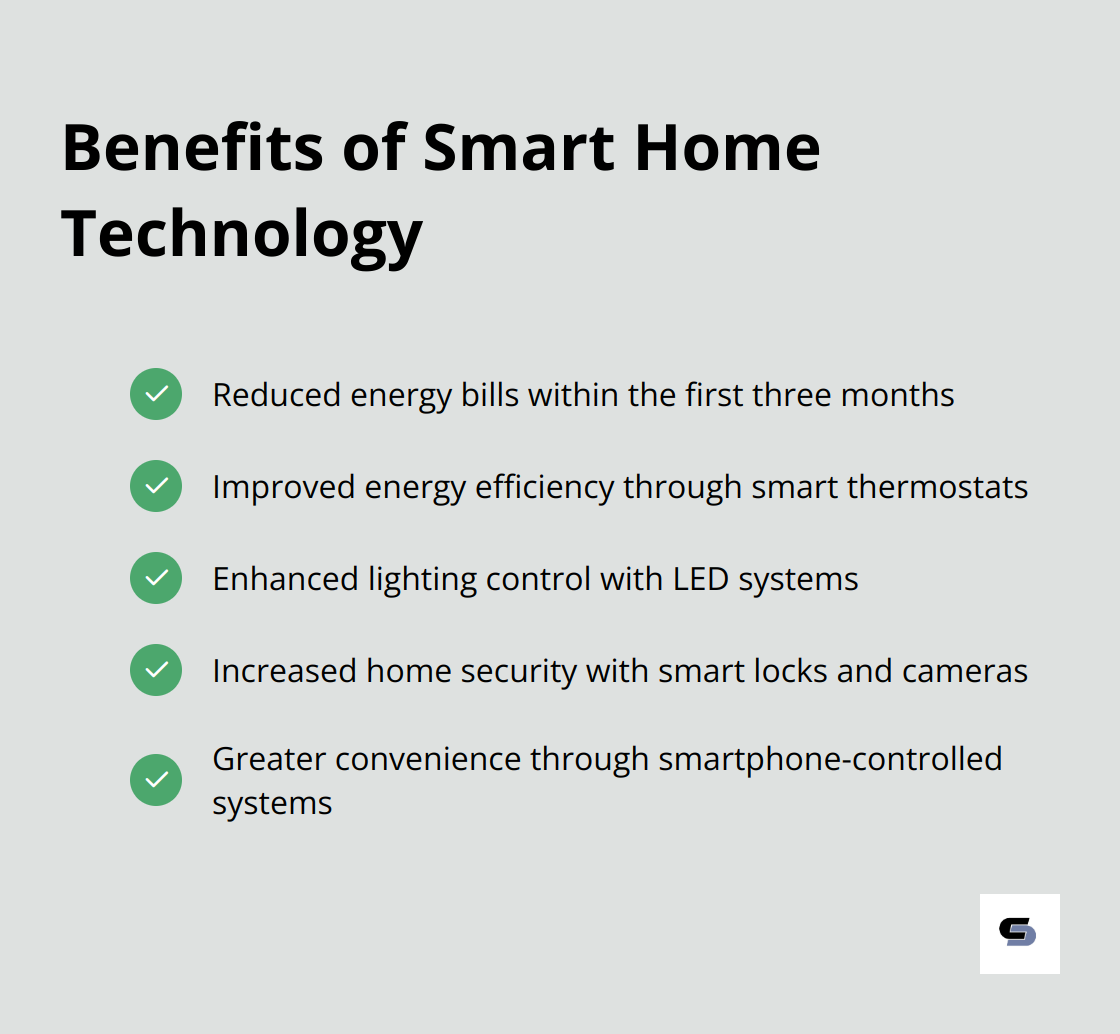
Blend Retro and Modern Elements
While modernising is the goal, you don’t have to completely erase your home’s 70s character. Try to incorporate some retro elements in a modern way. For example, use bold geometric patterns in your tile work or choose furniture with clean lines that echo 70s design.
You can also repurpose original features. An old brick fireplace can become a stunning focal point when painted in a contemporary colour. Original hardwood floors can be refinished to reveal their natural beauty, adding warmth to your modern interior.
As we move forward in our renovation journey, let’s turn our attention to the exterior of your 70s home. The next section will explore how to enhance curb appeal and create a contemporary facade that complements your newly modernised interior.
Transforming Your 70s Home Exterior
Revamp the Facade
Updating your home’s facade will modernise its appearance and increase property value. Replace dated materials like asbestos cladding with modern alternatives such as fibre cement boards or rendered finishes. These materials offer better durability and insulation (and look sleek too).
A fresh coat of paint can work wonders for those on a tighter budget. Choose contemporary colours that complement your home’s architecture. Greys, whites, and charcoals can make your 70s home look instantly more modern.
Install Energy-Efficient Windows and Doors
Replace old windows and doors to improve both aesthetics and energy efficiency. Energy-efficient windows and doors can significantly reduce greenhouse gas emissions. Modern double-glazed windows can reduce heat loss in winter and heat gain in summer.
Install large picture windows or sliding glass doors to create a stronger connection between indoor and outdoor spaces. For added convenience and energy savings, opt for smart windows that tint or clear based on sunlight intensity.
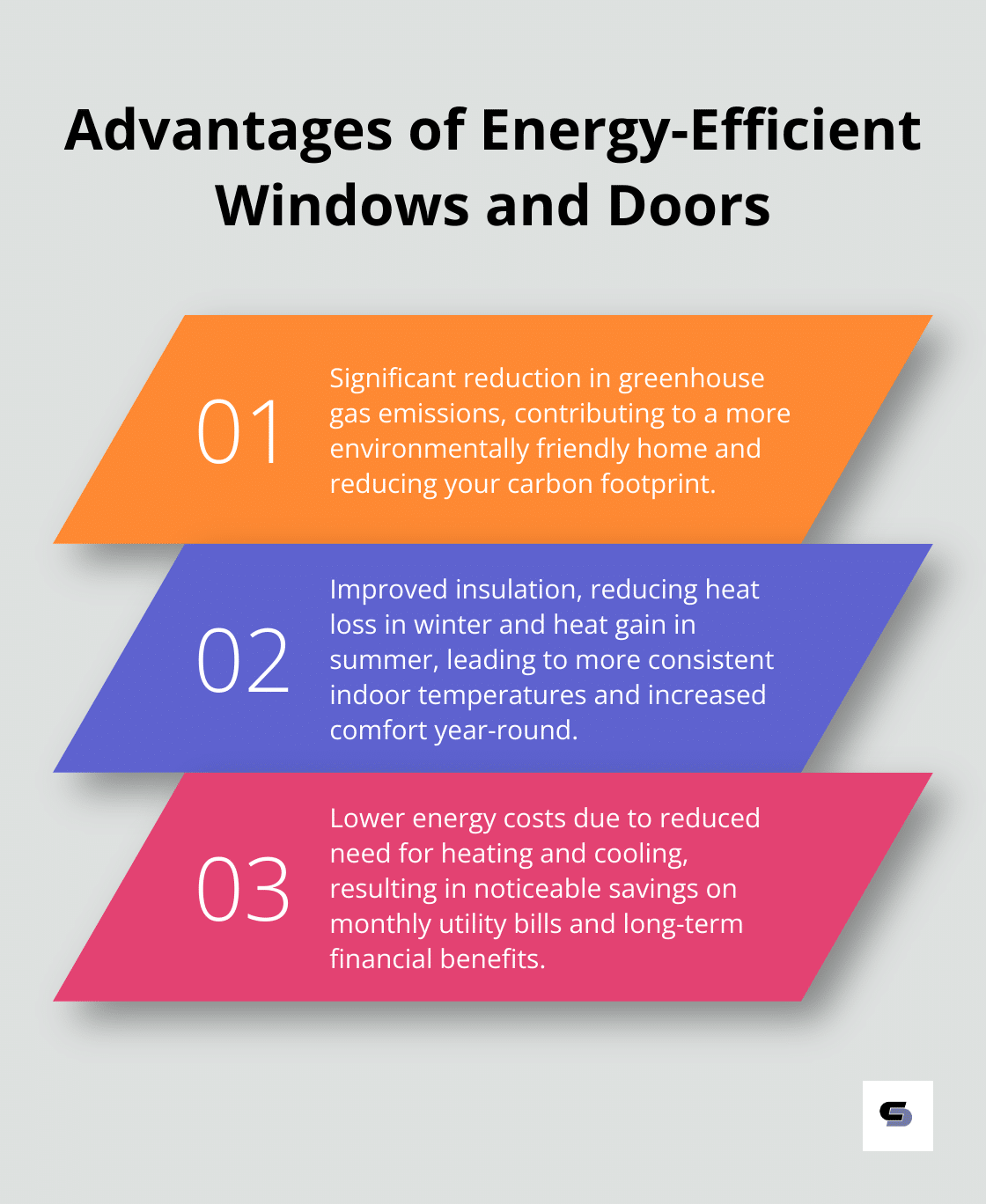
Landscape for a Modern Look
Your garden frames your home’s new look. Choose low-maintenance, drought-resistant plants that suit Australia’s climate. Native plants like kangaroo paws or bottlebrush require less water and care.
Create clean lines in your garden design to echo the modern aesthetic of your renovated home. Try raised garden beds with geometric shapes or a minimalist rock garden. Add outdoor lighting to enhance your home’s nighttime appeal and increase security.
Balance Modern Updates with Original Character
A successful exterior renovation should enhance, not erase, the unique features that make your 70s home special. Preserve elements like exposed brick or interesting rooflines while updating surrounding areas for a harmonious blend of old and new.
Consider Professional Guidance
For complex exterior renovations, professional help can be invaluable. At Cameron Construction, we offer expertise in modernising 70s homes while respecting their original character. Our team can provide tailored solutions to transform your home’s exterior, ensuring a result that’s both stylish and functional.
Final Thoughts
A 70s house renovation transforms a retro home into a modern masterpiece. This exciting journey blends nostalgia with contemporary design, creating a functional and stylish living space. The key to success lies in striking the right balance between preserving unique character and incorporating modern elements.
Professional guidance can make a significant difference in the outcome of your project. Complex renovations often require expertise in areas such as structural engineering, energy efficiency, and design. We at Cameron Construction specialise in transforming 70s homes into modern living spaces (our team of experts can help you navigate the challenges of renovation).
Your renovated 70s house will combine the best of both worlds – retro charm and modern functionality. The result will be a unique, comfortable, and stylish living space that you’ll enjoy for years to come. Our team can ensure your project meets the highest standards of quality and craftsmanship.

